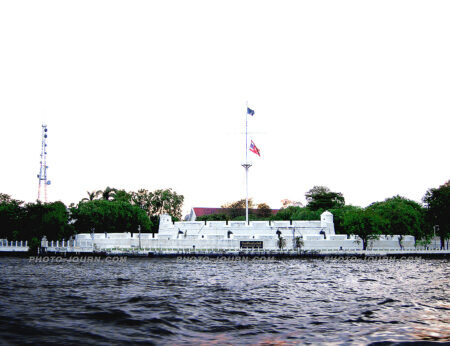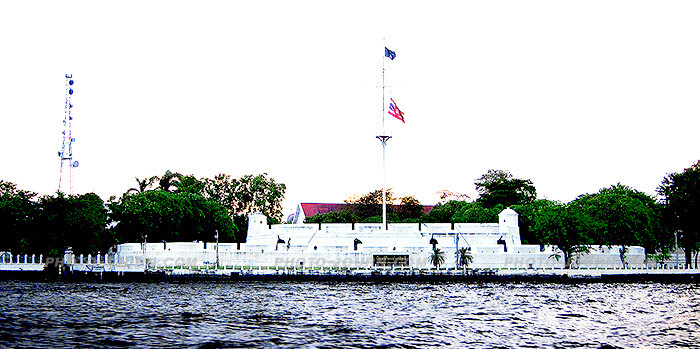Built during the reign of King Nari the Great, the Wichaiya Prasit Fort, or Bangkok City Fort, is one of two such fortresses built to house a French military garrison in Bangkok in 1688. It was originally named Wichaiyen Fort after the title of Constantine Phaulkon, a Greek adventurer, who became prime counsellor to King Narai of Ayutthaya, assuming the Thai noble title Chao Phraya Wichayen.
Its smaller sister fortress on the eastern bank of the Chao Phraya River, the Thonburi Fort, was destroyed in a battle between Thai (then Siam) and French troops during the reign of King Petratcha, who ruled between July 11, 1688 and February 5, 1703.
The Bangkok and Thonburi forts housed some 200 French troops, as well as a Siamese contingent provided by King Narai. French troops and officers were also deployed on the King of Siam’s ships to assist in the fight against pirates.
When King Nari became ill in 1688, the commander of the Elephant Corps, Phra Phetracha, capitalizing on anti-French sentiment, staged a coup d’etat by seizing the Royal Palace in Lopburi and putting the king under house-arrest, killing the king’s adopted son in the process.
The siege of Wichaiya Prasit Fort
When the French commander of the Bangkok fortress refused to hand it over to Phra Phetracha as demanded, he found himself besieged by some 40,000 troops and 100 canon.

The French troops abandoned the Thonburi Fort and consolidated themselves in the larger Bangkok Fort, destroying some of the Thonburi Fortress embattlements and all of its cannons prior to leaving.
After an initial period of combat during which both sides exchanged canon fire, a stalemate developed and after several months a truce was negotiated that saw the French abandon the Wichaiya Prasit fort and leave Siam, while the Dutch, who the French accused of aiding the Siamese, cemented their trading agreement with the country.
On the day after the departure of the French the 1644 Treaty and Alliance of Peace between Siam and the Dutch East India Company was renewed, guaranteeing the Dutch the deerskin export monopoly they had previously, as well as renewing their export monopoly on Ligor for tin.
Wichaiya Prasit Fort (Bangkok Fort) is now part of the navy’s headquarters so it’s not open to the public. A ride on any of the Chao Phraya boat services between Memorial Bridge and Thien, however, provides an excellent view.
Feature photo Maythee Anegboonlap
He has spent extensive periods of time working in Africa and throughout Southeast Asia, with stints in the Middle East, the USA, and England.
He has covered major world events including Operation Desert Shield/ Storm, the 1991 pillage in Zaire, the 1994 Rwanda genocide, the 1999 East Timor independence unrest, the 2004 Asian tsunami, and the 2009, 2010, and 2014 Bangkok political protests.
In 1995 he was a Walkley Award finalist, the highest awards in Australian journalism, for his coverage of the 1995 Zaire (now Democratic Republic of Congo) Ebola outbreak.
Most recently he was the Thailand editor/ managing editor of AEC News Today . Prior to that he was the deputy editor and Thailand and Greater Mekong Sub-region editor for The Establishment Post, predecessor of Asean Today.
In the mid-80s and early 90s he owned JLF Promotions, the largest above and below the line marketing and PR firm servicing the high-technology industry in Australia. It was sold in 1995.
Opinions and views expressed on this site are those of the author’s only. Read more at About me
Latest posts by John Le Fevre (see all)
- Kaavan’s great escape photo special (video & gallery) – November 30, 2020
- A real life fairy tale: Cambodia provides sanctuary to Kaavan, the world’s loneliest elephant (video & gallery) *updated – November 30, 2020
- Death for corruption and press freedom abused as Thailand continues Nth Korean-like slide – July 23, 2015
- Thailand’s young rice farmers boost income, slash costs with switch to organic, AWD method – May 29, 2015

